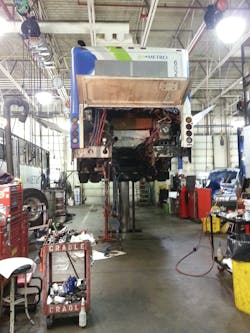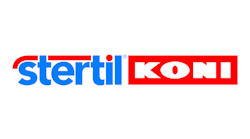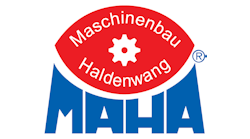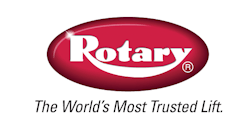Transit maintenance shops have more than just buses or rail cars to lift. There are often service vehicles and occasionally even other city vehicles, such as refuse or fire trucks. And while one garage may send out some work, the next might do everything in-house.
Choosing a lift for your operations depends on a lot more than just what you have in your budget. Mohawk Resources Ltd. Sales & Marketing Manager Steve Perlstein said the first and most important question is what do you want to lift? “Fact is, every mass transit agency is still going to have a bunch of little cars and trucks that do all kinds of things.”
Also, you need to consider what your future looks like. Will you be bringing on articulated buses? Some kind of hybrid? Different dimensions of vehicles means different accommodations are required. Rotary Lift Heavy-Duty Project Manager Doug Spiller suggested having someone come in to survey your fleet, vehicle weights and axle weight. “There can be extra battery weight, natural gas buses are taller … there are a lot of considerations to look at.”
You need to consider what type of service you will be doing; is it for a PM bay or a heavy-maintenance bay with engine replacements. Will there be multiple bays for different work or do all types of repair and service need to be done in one bay?
Maximum Flexibility
There are different lift styles and each of them has advantages and is best suited to certain applications.
Mobile column lifts are individual lifts used in sets with a master control synchronizing the columns so they operate together. They are rolled into place, you drive on, and the lift grabs vehicles by the wheels. The work you can do when the vehicle is supported by the lift is limited because the wheels are engaged, but the biggest advantage of this style, said Perlstein, is price and flexibility.
Maha USA LLC Regional Sales Manager Ron Reazer said mobile lifts aren’t dedicated to one bay. There’s also the option of wired or wireless, which offers even more freedom.
Compared to other lifts they’re inexpensive as you don’t have to do the infrastructure work putting a lift in the ground. Also, if you’re buying one and several jack stands, you can support multiple vehicles with the one set of lifts. Spiller mentioned the mobile lifts can accommodate a variety of sized-vehicles if there is a wide assortment in the fleet and with service vehicles.
A drawback to this style is that they take more room. They are wider than the vehicle, so they will add almost 6 feet to the bay, said Steritil-Koni Sales Support Manager Peter Bowers. However, Spiller said the bay can be used for various uses because you can roll the lifts away.
Another consideration is that it takes five or 10 minutes every single time you are setting the columns up. “If you’re going to do just a basic PM, you want to be up, you want to be down,” said Perlstein. With any of the runway-type lifts, “You drive on, 60 seconds later you’re at full height.”
Floor-Mounted Lifts
Looking at fixed-ground lifts mounted into the shop floor, they require a varying amount of investment in building infrastructure as there’s excavation and construction required.
Post-mounted lifts are two or four-post lifts that are mounted on top of the shop floor and lift the vehicle by the frame or, if a four-post, is a runway. You reduce installation cost when you don’t have to dig into the floor and if you will need to move them at a later date it is easier to do.
Parallelogram and scissor lifts are drive-on lifts with runways. Parallelogram moves the vehicle a short distance forward or backward while scissors goes straight up and down.
In-ground lifts utilize one or more pistons to raise the vehicle and require deeper excavation to accommodate the piston height when not engaged. Installation costs are higher for in-ground lifts while the lifts not embedded in the shop floor are much less critical installation because it is shallow.
The bay size you have available can be a factor. Perlstein said, “A four-poster needs a 12-foot bay, a parallelogram a 9-foot bay.” Post mounts have the additional height of the posts and in some cases, are higher than the vehicle. Runway style lifts could mean there is always a runway on the floor of the bay. A flush mount for a parallelogram lift can leave the bay open for drive through. With a parallelogram, as well as being lifted, the vehicle is moved a short distance forward or backward so you need to be aware of vehicle overhangs.
The amount of room there is to work on the vehicle and whether the wheels are free are two major considerations. Post lifts and in-ground lifts offer more room underneath than parallelogram lifts.
There is also limited work you can do when the wheels support the vehicle. The drive-on lifts that leave wheels free can be advantageous Bowers said, “… when you look at that 60 to 70 percent of the maintenance is on brakes and steering.” With a plaftform lift where the wheels are engaged, he said you’re doing quick fluid maintenance.
Sustainable Solutions
Lift manufacturers are looking for greener solutions. Spiller said with lifts that have been around since the early 70s, they are “giant concrete pits full of nasty fluids.
“These concrete pits allow the fluids to transfer into the environment,” he said. “Anyone that has had to dig out one of these knows about the remediation.” He also said it gives in-ground lifts a negative connotation.
“Today they are encapsulated boxes welded and coated inside and out,” Spiller explained. Not only can there be coatings to prevent liquid transfer, he said you can have alerts to let the user know when fluid needs to be pumped out. Steel containment also prevent liquid contamination.
He added that almost everyone’s lifts today use biofluids. “Some will run 25 years without requirements for changing.”
Further Considerations
When you’re purchasing a lift you’re looking at 15 to 25 years out of it. “You’re concerned about a return on investment,” Bowers said. “Transit uses their lifts constantly; they need dependable machinery and a dependable vendor.
“Anything mechanical breaks down once in a while. You need good after-sales support.”
There are so many considerations to be taken into account and lifts have changed over time. Spiller stated, “There is no dumb question, people just don’t know.”
Reazer pointed out that one of the other key things to look at is if the lift is certified. The Automotive Lift Institute (ALI) developed a certification program which includes compliance with national product safety standards. ALI currently certifies the following lift types: 2-post surface mounted, multi-post runway, low/mid-rise frame engaging, drive-on parallelogram, scissors, moveable wheel engaging and in-ground. More information can be found on the website www.autolift.org.






